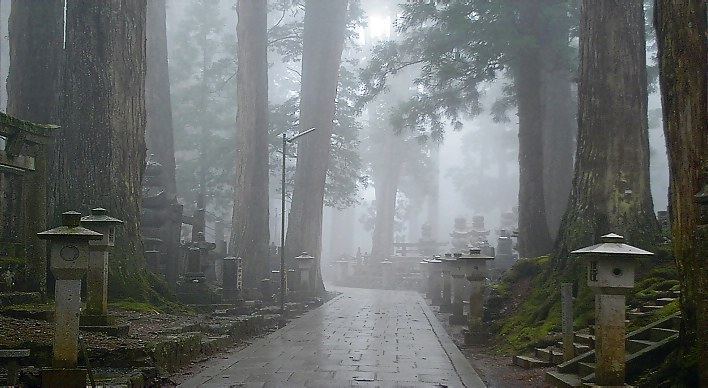Criteria ii, iii, iv, vi UNESCO region Asia-Pacific | Type Cultural, Religious Reference 1142 UNESCO World Heritage Site inscription 2004 | |
 | ||
Similar Kongōbu‑ji, Enryaku‑ji, Okunoin, Kumano Kodō, Gokurakubashi Station | ||
Mount Kōya (高野山, Kōya-san) is the name of mountains in Wakayama Prefecture to the south of Osaka. Also, Kōya-san is a modifying word for Kongōbu-ji (金剛峯寺). There is no mountain officially called Kōya-san (高野山) in Japan.
Contents
Map of Koya-san, Koyasan, Koya, Ito District, Wakayama Prefecture 648-0211, Japan
First settled in 819 by the monk Kūkai, Mt. Kōya is primarily known as the world headquarters of the Kōyasan Shingon sect of Japanese Buddhism. Located in an 800 m high valley amid the eight peaks of the mountain (which was the reason this location was selected, in that the terrain is supposed to resemble a lotus plant), the original monastery has grown into the town of Kōya, featuring a university dedicated to religious studies and 120 temples, many of which offer lodging to pilgrims. The mountain is home to the following famous sites:
In 2004, UNESCO designated Mt. Kōya, along with two other locations on the Kii Peninsula, Yoshino and Omine; and Kumano Sanzan, as World Heritage Sites "Sacred Sites and Pilgrimage Routes in the Kii Mountain Range".
The complex includes a memorial hall and cemetery honoring Japanese who were imprisoned or executed for committing atrocities during World War II.
Access
Koya-san is accessible primarily by the Nankai Electric Railway from Namba Station (in Osaka) to Gokurakubashi Station at the base of the mountain. A cable car from Gokurakubashi then whisks visitors to the top in 5 minutes. The entire trip takes about 1.5 hours on an express train or 2 hours by non-express.
Local automobile traffic can be very heavy on weekends until well into the evening. On weekdays, however, the mountain offers a pleasant drive followed by the excitement upon reaching the monasteries lining the summit. Many Buddhist monasteries on the mountain function as hotels for visitors providing traditional accommodation with an evening meal and breakfast.
